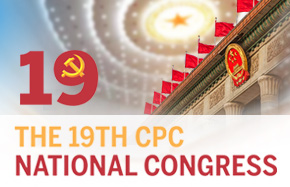National Day parade displayed nation's pride
Editor's Note: In his speech on the 70th anniversary of the founding of the People's Republic of China, President Xi Jinping reaffirmed China's commitment to peaceful development. Seven experts share their views on Xi's speech and the military parade held to mark the anniversary with China Daily's Liu Jianna:
Showcasing new ideas for a new era
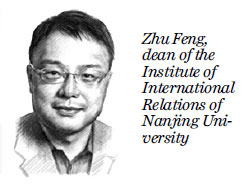
To a large extent the parade aimed to show the strength of a country that is committed to peaceful development. Generally speaking, China's growing military strength can be attributed to Chinese people's efforts over the past seven decades on the one hand and the nation's continual integration into the international community and its promotion of the basic value of peaceful joint development, on the other.
With its new capabilities what China can contribute to safeguard world peace and stability is worth looking forward to.
As fewer countries now hold them, military parades are increasingly becoming a Chinese tradition. But a military parade provides an opportunity for China, a country that only gained its sovereignty and independence 70 years ago, to showcase its achievements and unite its people.
Besides, as the challenges from home and abroad, such as the growing hostility to China among some people in the Western societies and the constant turmoil in the Hong Kong Special Administrative Region, become increasingly acute, it is necessary for China to tell hostile forces it is no longer a weakling and no one should take it for granted anymore.
The parade also emphasized the new development direction, measures and achievements of the new era. For instance, the first formation was the commander formation, showing the growing emphasis on governance. In addition, education, anti-corruption, military construction and technological progress were also well-underlined in the grand rally.
Conducive to maintaining strategic balance
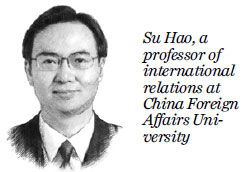
The military parade had many highlights. First of all, every service had its own phalanxes, which showed the results of the ongoing military reform which has focused on resolving the deep-seated contradictions and problems in the military system. Second, 121 generals participated in the parade, the highest number to take part in any of the country's 15 parades. Also high-level commanders led each phalanx, demonstrating the strong leadership and discipline of the People's Liberation Army. Furthermore, 40 percent of the military equipment on display made its debut in public. Among the most advanced military technologies showcased, were the DF-41 intercontinental nuclear missiles, which can reach all of China's major competitors, significantly improving China's deterrent abilities.
Unfortunately some Western countries have named China as a strategic rival and introduced military strategies accordingly. This could lead to aggravated and dangerous strategic disequilibrium, and even give rise to clashes. In this sense, China's "show of force" is conducive to strengthening its military deterrence and in turn prevents others from resorting to military adventurism, thus contributing to world peace.
In his speech Xi not only recalled China's history, but also pointed out the future course the country is determined to take. And as he said, "No force can ... stop the Chinese people and nation from marching forward." This showed China's growing confidence and told those harboring evil designs that any attempts to obstruct China's rise will be to no avail.
Pride in nation's achievements
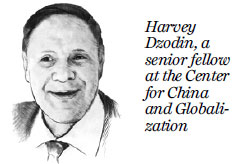
In less than 10 minutes, President Xi managed to highlight and emphasize a number of the most powerful themes of his presidency, elements of which were graphically and dramatically demonstrated in the parade that followed.
President Xi, and the parade, took us on a journey that spanned modern Chinese history: from a century of humiliation to the founding of the People's Republic of China to its current path, seven decades later, of national rejuvenation and being on target to reach the two centenary goals "through concerted efforts and arduous struggle".
But Xi also stressed that China will continue to follow its path of peaceful development and its mutually beneficial opening-up strategy.
China's Belt and Road Initiative, involvement in international and multilateral organizations as evidenced by the Chinese contingent of United Nations peacekeepers who marched in the parade, and other efforts are elements of this engagement. As Xi said, "We will continue to work with people from all countries to push for jointly building a community with a shared future for humanity." This is the polar opposite of the US leader's selfish and shortsighted "America first" mantra.
Another polar opposite is that Chinese people are patriotic in the extreme. As we witnessed in the parade, Chinese people love their country and approve of the way it's governed and take pride in the economic miracles it has achieved. It's been a long time since many of us Americans have felt this pride, especially in the last few years.
A role model for other developing countries
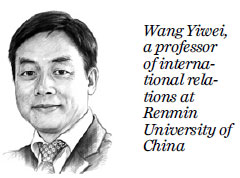
Criticism of China by some in the West, who accuse it of saber rattling, does not hold water. That China has displayed its most advanced weapons in a parade, instead of on the battlefield, as well as the fact that China has never resorted to force to seek expansion in its thousands of years of history, should give them some food for thought.
Different from some Westerners who worship military force, the Chinese believe in subduing the enemy without fighting, namely through military deterrence, resulting in defensive military policies designed to promote peace. It is worrying to imagine what might happen to the international community if China had not built a powerful military and the United States had its own way.
In a way the parade was not only designed to lift morale at home, but also to show to the world that China is not afraid of external pressure and bullying and that the decoupling of China and US and a new Cold War could be disastrous.
Some US media have intentionally linked the parade with the rioting in the Hong Kong Special Administrative Region, which is absurd. What is happening in Hong Kong is just a storm in a teapot, while the parade is aimed at forces that threaten world peace and development.
That China has significantly increased its military and comprehensive strength should offer great inspiration and hope to other developing countries. That is why the parade transcended the narrow-minded nationalism and laid emphasis on the building of a community with a shared future for humanity and the safeguarding of world peace. It is regretful that some Westerners who are mired in a zero-sum mentality and great-power politics still do not understand China.
Spirit of parade points way to bright future
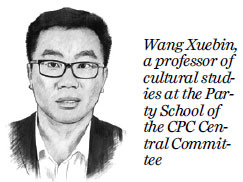
No doubt the grand parade for the 70th anniversary of the founding of the People's Republic of China will go down as an important moment in the nation's history. The splendid parade and the fireworks show on the same day have most clearly and directly manifested China's increased national strength.
China has indeed come a long way from the impoverished country that depended on weapons manufactured by other countries and the planes on display having to make two passes to complete its first parade in 1949 to a power that has some of the most advanced military technologies.
The grand parade displayed the strong national confidence and pride of the Chinese people and their determination to realize China's great rejuvenation. Certainly demanding challenges and tasks lie ahead, but the spirit of the parade showed Chinese people have the resolve to overcome them and create more miracles.
Huge progress made in weaponry

The parade, among other things, demonstrated the revolutionary changes and amazing progress that China has achieved in its weaponry. The military equipment on display was 100 percent made in China, in stark contrast to the first military parade in 1949 when the arms displayed came from 98 factories in 24 countries.
As a leading industrial power, China excels in the integrated, mutually enhancing and sustainable development of military and civil manufacturing. As a result the upgrade in China's military equipment puts a much lighter load on the national economy thanks to economies of scale. Meanwhile major countries, including the United States, depend on fiscal expenditures to develop their arms industry and this puts a strain on economic development because they cannot apply the technologies in civil manufacturing and profit from them.
In this sense, it is no good for certain major powers to try to instigate a new Cold War as they are no match for China, at least in the sustainable development of the military industry.
China moving to center of world stage

With the United States choosing to abdicate from its global responsibilities, China is being catapulted into assuming an increasingly important role in world affairs, so it should have come as no surprise that the National Day celebrations marking the 70th anniversary of the founding of the People's Republic of China dominated media headlines worldwide. The military parade staged as part of the celebratory events clearly showcased China's new strengths in organization, technology, coordination, discipline and also the Chinese people's sense of national pride. While the speech by President Xi Jinping pointed to the future direction of the country, which seems ordained to be a shaper of the history of the 21st century.
Standing in Tian'anmen Square, Xi speech embodied the adage "less is more". In this spirit, in less than 10 minutes, he managed to look back at the past and look forward to the future. He first recalled Chairman Mao announcing the founding of the People's Republic of China in 1949, at a time when China "was poor, weak and bullied", underlining how the hard work and struggles of the Chinese people have ensured that today "no force can shake the foundations of this great nation".
The pursuit of the two centennial goals - of making China a moderately prosperous society in an all-around way next year and then making China a "fully developed, rich and powerful" nation by 2049 - has not been without challenges, both from outside and inside.
The most pressing of these remains the continuing bid by world's most powerful country, the United States, to contain and curb China's rise, but there have also been discordant voices among segments of China's rapidly upwardly mobile society. This saw Xi underline the need for building synergies and unity and "joy and happiness for all ethnic groups". He also assured the Hong Kong and Macao special administrative regions of their "long-term prosperity and stability" and pledged to promote the peaceful development of cross-Straits relations as China continues to strive for the "complete reunification'" of the Chinese nation.
Many Westerners looking at China from afar disapprove of Socialism with Chinese characteristics. To them, I can only say "get over it". China doesn't tell any other country to replace their system with its system; China talks about mutually beneficial relations.
But ensuring people of the world receive this message calls for China to tell its story well. Although Mandarin may be spoken by the largest number of people on the planet, it is English that continues to dominate information flows worldwide, and the United States still dominates the global media.
This, of course, is not to say that global narratives have not begun to appreciate the constructive nature of the Chinese growth trajectory and the positive effects it may have.
The views expressed here do not necessarily represent those of China Daily.

(China Daily Global 10/08/2019 page12)














